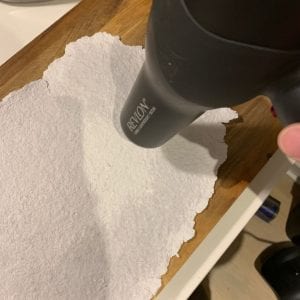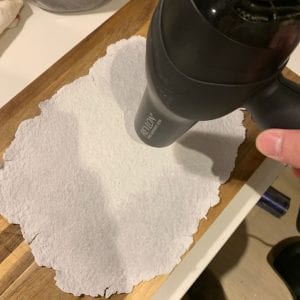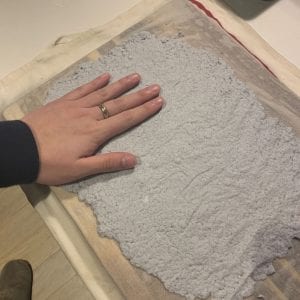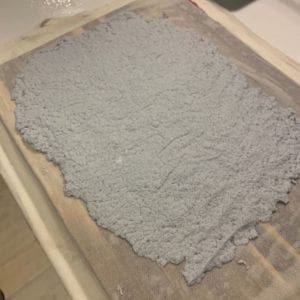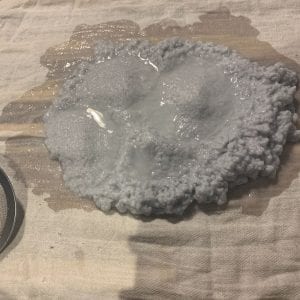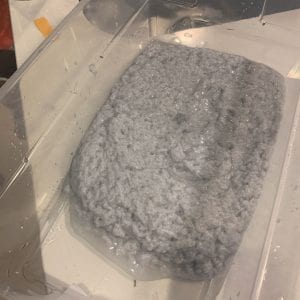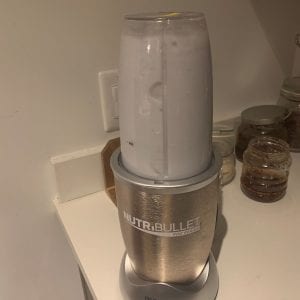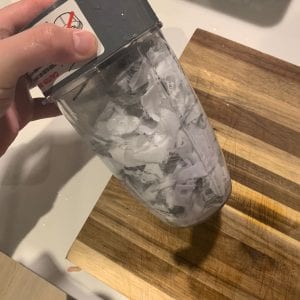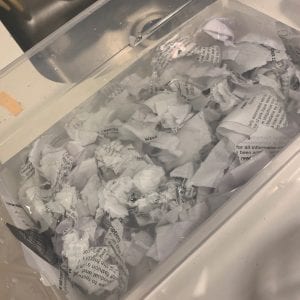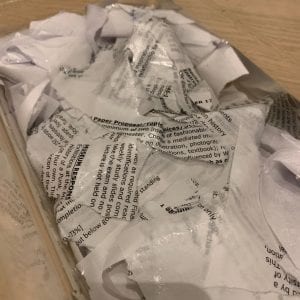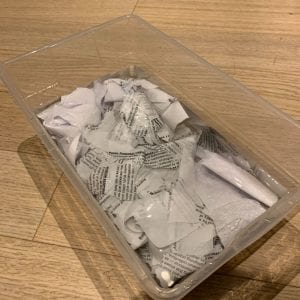Test with an Experiment
4. Attempt repair.
Does it work?
Yes, it worked effectively to recycle and reuse the old writing materials.
5. Was the repair successful? Are you happy with the results? Is the repair more beautiful/interesting in some way than the original? How is the object more resilient after the repair?
The repair can be considered successful as it offers a good chance to recycle materials and avoid over consumption of resources. Nevertheless, the repair is not more beautiful or interesting than the original. Moreover, it is hard to tell whether the object is more resilient after the repair.
Analyze and Draw Conclusions
6. What did you learn? How long do you expect this repair to actually last now that it is complete? What surprises did you encounter? What would you do differently next time? Are there other ways you could have repaired this item, that you realize now? After completing this project, do you consider repair a more valuable skill?
During the repairing process, I learned that the repair is a challenging yet rewarding process, since it is a creative process to benefit the environmental protection. Even though it took only two days to complete the repair process, I have interesting and surprising experiences. The biggest surprise is that repair can bring so much fun. Also, I plan to do it differently next time to make the repair more beautiful in other ways, such as making the used writing papers into beautiful paintings. All in all, I consider repair a more valuable skill after completing this project.
Communicate Results
7. Create an illustrated LP post showing your process and results. Be mindful of lighting, focus, background and final results.
To address the public concern about environmental protection and global sustainability, I have focused on recycling and reusing of the used writing paper. Such a repair is carried out under the background of overconsumption of natural resources and the global warming, which calls for effective solutions to address the environmental concern. As the final result, the repair successfully recycles and reuses old materials and realize the goal to benefit environmental protection via recreation.
Reflection:
8. What is the most important aspect of making a design easily repairable?
The most important aspect of making a design easily repairable is to reduce negative influence upon the original version and to use fewers materials for the repair process.
9. After completing this project, what’s one object that you wish you could repair but don’t feel as though you currently have the skills to do so?
After completing this project, I wish I can repair the wasted plastic bottles which I do not feel as though I currently have the skills to do so.
10: Did your repair require fewer materials and involve fewer systems than buying a new replacement? Which systems?
Yes, I repair work requires fewer materials and involve fewer systems than buying a new replacement.
2) How do you as an artist/designer want to skillfully and creatively meet the challenges presented by the Sixth Extinction? How might this approach, differ from your responses to the Great Acceleration and Anthropocene?
While the Sixth Extinction is mainly caused by the human activities, it is necessary for artists and designers to skillfully and creatively meet the challenges. To be more specific, there can be multiple ways for designers and artists to avoid negative influence upon the Earth, such as avoid using materials that can pollute the natural environment or harm the wildlife. Such an approach that revolved around environmental protection differ from my response to the Great Acceleration and Anthropocene in that it pays more attention to the wildlife.
3) Carefully read the following article on Systems Thinking and Mapping . Bring a printed copy with you to class next week for discussion. How does this kind of mapping seems to differ from life cycle design? What questions do you have about five themes of this article — interconnectedness, synthesis, causality, emergence, feedback loops. Can you think of examples of each? How do you think systems thinking relates to sustainable art and design?
This kind of mapping seems to be different from life cycle design because it seems to view design and creation in a comprehensive and systematic way. As mentioned in this article, five themes or tools can work effectively to think differently, such as interconnectedness, synthesis, causality, emergence, and also feedback loops. When it comes to interconnectedness, it highlights the fact that everything is interconnected; therefore, a typical example is to figure out the connection between individual design and the six Extinction or other topics. As for synthesis, which means to combine two or more things to create something new, a typical example is to use two types of used materials for recreation. A typical example for causality, which is closely related to how one thing results in another thing in a dynamic and constantly evolving system, is that the material found by chance for repair and recreation. As for emergence, which refers to the natural outcome of things coming together, a typical example is to use different materials to naturally reproduce the design work. An outstanding example for feedback loops, to count on biological mechanisms and the constant feedback loops for recreation.
4) Learn about Patagonia’s worn wear program and FabScrap. What is most inspiring to you about these programs? Do you know of others like it? Would you be more likely to buy their clothes after learning about these services?
The most inspiring thing about these worn wear program is that trading in personal clothing at any Patagonia retail location can help individuals to receive credit to put toward another new or used garment. Personally, I think these are amazing practices to motivate people to recycle and reuse old clothing and avoid a waste of materials. At the current stage, I do not know any other projects like this, particularly in my home country; therefore, I think it might be an appealing choice to promote such amazing practices. Considering such commitments to environmental protection and global sustainability, I am more likely to buy their clothes after learning about these services.
5) Start your natural dye project Extra links from class today:
To learn more about the history of pigments,
It feels like a challenging but rewarding task to make my own dyes. As a matter of fact, I knew about the natural dyes before the course. In China, batik which is made from natural organic dyes is an outstanding example of natural dye. Due to the personal interest in the natural dye, I think it is quite interesting to participate in the research project that documents the natural dye explorations. Specifically, “The Urban Dyers Almanac draws a link between the city and the larger State of NY, and highlights the vital role that greenmarkets have in building and sustaining local economies” (Urban Dyers Almanac, 2019). Therefore, such a project can be quite interesting and rewarding.
Reference:
Urban Dyers Almanac. (2019). About the Uban Dyer’s Almanac. Retrieved from http://www.urbandyersalmanac.com/.

